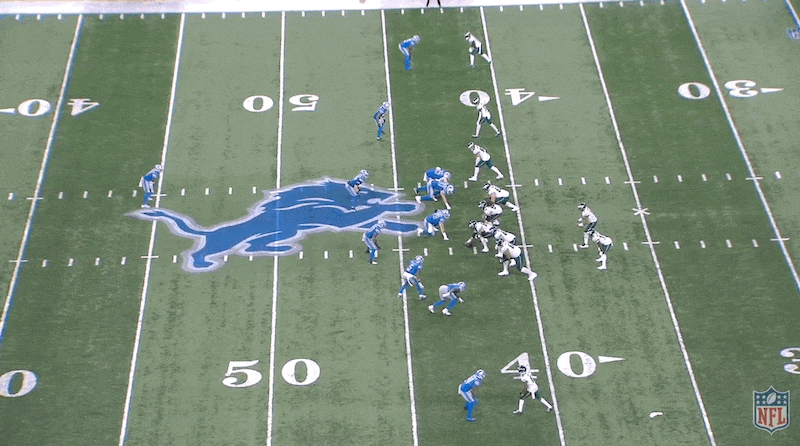As coaches, players, and fans of the game, we all know about “the guy.” This is the player that strikes fear and causes the opponent to lose sleep the week of the game. For the Eagles, this is AJ Brown, who finished the game with 10 catches for 155 yards on 13 targets. The Eagles traded their 1st and 3rd round picks for him this year and gave him a $100 million contract. While this might not be the case for your “guy,” we should all take a page out of the Eagles’ game plan and get them the ball.
3x1 RB Quick Motion w/ Tunnel Screen
Line WR up in different positions (60/40 split on outside/inside alignment)
Use decoy motion to get defense’s eyes elsewhere
Get the ball in his hands quick and let him do the rest, take QB’s decision
making out of it
2x2 Tight Splits w/ Fly Motion Away to Glance Throw
Motion gives QB an idea of what coverage he’ll get
Tight split makes it hard for DBs to play press coverage, allowing a
free release
Swing by RB pulls extra defender out of the glance window in man to man
If defense stays in 2 high with 3 over 2, coach QB to work the trips side
Orbit Motion as a Decoy on 3rd and Short
Any good defensive coach will make sure there are plenty of eyes on the
best player, use it to your advantage
Trust your other guys to make plays in key situations, but the best players
understand they can help their teammates get open and opportunities to score
3x1 4 Verts vs Man to Man
This is where the QB is coached up to recognize 1 on 1
Make the defense pay for trying to challenge your best player
Coach the QB to throw a high, catchable ball to give your guy a chance
for a big play or PI
Tight Formation with Fake Jet Motion/PA Boot to Crosser
Lots of eye candy for defense
Using strong run game to open up passing game
Takes pressure off star WR to not have to win against double coverage
It’s not a secret who is the best player on the field. He’s going to get plenty of attention from the opponent, but there are ways around it. The most important thing is that the offensive play caller and the quarterback are on the same page when it comes to your go to guy. That means that when there is an opportunity to get him the ball, take it! Don’t throw the ball into double coverage or force a play call, but have your quarterback prepared to know when he might get his favorite target 1 on 1. Lastly, don’t overcomplicate things. Sometimes we try to make things too hard, but football is just a numbers game. If they want to double your best player, they’re neglecting another part of your offense, so exploit it until they make an adjustment.








